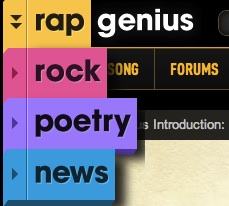My students have been working since last week researching significant events, theories, artifacts, etc. that have to do with reading on the screen in their assigned contexts — design, culture, society and technology. The first round of research was due today, which they submitted online through a Google form. Behind the scenes, I hooked up the resulting spreadsheet to a TimelineJS spreadsheet that generates our very own GDES 3300 Reading on the Screen timeline.
Students were super excited to see their work visualized and in context. In class, I did some reframing around what is a useful entry — not sure if that conversation went over nearly so well. Hopefully the revised entries, due on Wednesday, will set-up the mind mapping phase better than the first entries did.


